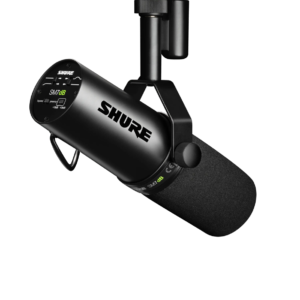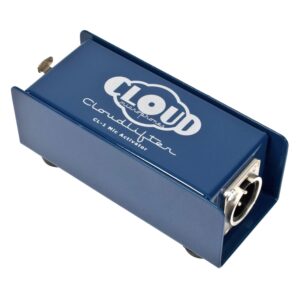One of the regular questions that people new to voiceovers ask when they plan to set up a home studio is – what voice over mic should I use?
The advice generally is to get a large diaphragm capacitor mic and a pre-amp/interface to connect to your computer. These mics have an XLR connection and invariably need to receive phantom power from the preamp to make them work.
 There are exceptions to the rule and one of them is the Shure SM7B – a very distinctive mic that was first brought out as the SM7 back in 1973 and then in late 90’s it was modified to the SM7B.
There are exceptions to the rule and one of them is the Shure SM7B – a very distinctive mic that was first brought out as the SM7 back in 1973 and then in late 90’s it was modified to the SM7B.
Historically it was intended to be a professional studio mic for a range of sources but over time was found to suit radio presenters and TV announcers – especially in the US. I have never come across one in a radio station studio in the UK.
In recent years the SM7B customer base has widened dramatically on the back of the explosion in podcasting and to a lesser extent gaming. Some podcasters started using SM7Bs and and got good results so others followed suit.
The SM7B is a moving coil dynamic mic which means it is not as sensitive to sound details as a capacitor mic. But this is a good thing for podcasting where the recording environment is often less than ideal. People who use these mics love the sound – but a frequent gripe has been that the level of the signal from the SM7B is very low.
Even with your pre-amp gain very high the signal may be still too low plus you get the added noise from the over-driven preamp too.
 Until recently one way of resolving the issue has been to buy a Cloudlifter – a device that goes in-line between the mic and the preamp and which boosts the signal to a more acceptable level.
Until recently one way of resolving the issue has been to buy a Cloudlifter – a device that goes in-line between the mic and the preamp and which boosts the signal to a more acceptable level.
Now Shure have decided to make it easier for everyone by bringing out the SM7dB. Based on aspects of the cloudlifter design they have added an on-board pre-amp to the mic which, by using phantom power, boosts the signal by +28dB but without changing the sound in any way. Shure claim “you get the sound you love but louder.”
The SM7dB does cost more than then SM7B but is generally less than it would cost you to buy an SM7B and a Cloudlifter. That’s still around £500 quid so some may feel they could get a similar quality large diaphragm capacitor mic for less. On the other hand if your recording environment is not perfect the SM7bD’s reduced sensitivity towards back ground and ambient sounds may make it a sensible choice.
Personally I prefer the detail in the sound that you get with a capacitor mic. But the dynamic sound of the SM7dB may suit some voices and styles of delivery that may sound warmer than a capacitor mic but without the bass-end proximity effect and also without the top frequencies that may sound harsh on some voices.
The Shure SM7dB is generally available from studio and music equipment retailers.
You can find out more here
Chris Radley – Voice Over